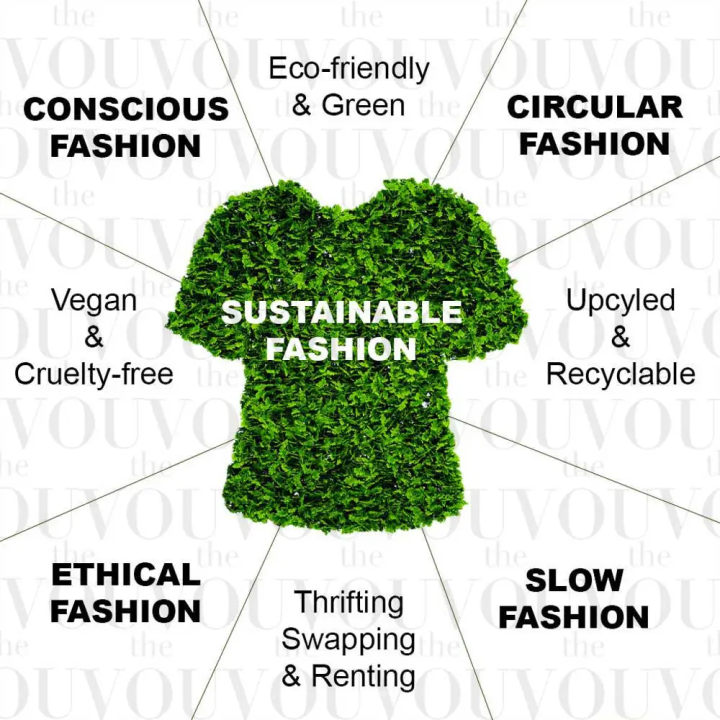Remain Ahead of the Curve by Discovering Cutting-edge Fashion Patterns
In a market as dynamic as fashion, remaining in advance involves greater than just complying with current fads-- it requires an exploration of development. Smart textiles, for instance, are changing garments right into practical masterpieces, while 3D printing is transforming design procedures with its adjustable, waste-reducing capabilities. As sustainability becomes a keystone, advancements like environmentally friendly products and round fashion methods are improving environmental obligation - Cape Town Sustainable Fashion. Additionally, the convergence of technology and style heralds a new era of customer interaction. How, then, can these arising trends redefine the future of style, and what ramifications do they hold for brand names looking for to prosper in this progressing landscape?

Embracing Smart Textiles
In recent times, the fashion business has actually witnessed a transformative shift with the combination of smart fabrics, a sophisticated innovation that blends technology with material. This development represents not only a combination of appearances and capability but also a significant jump in the direction of sustainability and customization in vogue. Smart fabrics, likewise understood as e-textiles, embed sophisticated electronics such as sensors and conductive threads within the textile, making it possible for garments to interact with the environment or the user.
These textiles are developed to check physical specifications, such as heart rate or body temperature, offering real-time health analytics. Past wellness applications, wise textiles are also being made use of for flexible garments, which can change color or pattern in response to ecological stimulations, therefore providing a dynamic style experience.
In addition, the advancement of energy-harvesting textiles that create power from motion or sunlight is leading the way for self-sufficient wearable technology. This technology is interesting eco aware consumers and developers intending to reduce the eco-friendly footprint of style. As research and growth in this area development, smart fabrics are expected to come to be increasingly widespread, reshaping the landscape of modern-day style with their multifunctional capabilities.
The Surge of 3D Printing
Transforming the production landscape, 3D printing has become a game-changer in the fashion business. This sophisticated innovation has allowed developers to push the borders of creativity, generating elaborate and tailored garments that were previously unbelievable. By leveraging digital style and additive production, 3D printing helps with the creation of complicated geometries and patterns, enabling designers to trying out brand-new textures and structures.
A significant benefit of 3D printing in fashion is its capacity to generate on-demand, reducing waste and minimizing inventory needs. This effectiveness not just optimizes production processes however likewise permits for rapid prototyping, making it possible for developers to bring their visions to life in a shorter timeframe. Additionally, 3D printing sustains customization to a level unrivaled by typical approaches, using individualized fits and unique styles tailored to individual consumer preferences.
The increase of 3D printing has actually additionally democratized fashion, making it accessible to arising designers that can now produce top quality pieces without significant financial investment in conventional production framework. As technology remains to breakthrough, the fashion business is positioned to harness the full possibility of 3D printing, discovering new products and methods that will most certainly redefine exactly how fashion is conceived and produced.
Sustainable Style Developments
As the apparel industry faces the pressing requirement for environmental obligation, lasting style technologies have actually arised at the forefront of transformative change. The growing understanding of environmental influence has sustained a change towards even more eco-conscious techniques and materials. Brand names and developers are now focusing on sustainability, including techniques that reduce waste and reduce carbon impacts.
One substantial development is the surge of circular fashion, which stresses recycling and upcycling to extend the lifecycle of garments. This technique not read this article only minimizes waste yet also urges customers to embrace an extra conscious method to clothing intake.
Another development depends on the adoption of ingenious dyeing strategies that utilize natural dyes learn the facts here now or waterless procedures, consequently lowering the large amounts of water and chemicals commonly used in textile dyeing. Additionally, innovations in biotechnology have led to the production of lab-grown natural leather and fabrics, using cruelty-free and ecologically pleasant choices to conventional materials. Via these introducing initiatives, the style sector is making meaningful strides towards a more sustainable future.

Tech-Integrated Apparel
Tech-integrated apparel stands for a cutting-edge combination of fashion and technology, improving exactly how people engage with their clothes. This ingenious domain name is noted by the inclusion of clever fabrics and embedded electronic parts, improving both capability and aesthetic allure. From health and fitness trackers embedded in sportswear to warmed coats managed through smartphone applications, tech-integrated apparel uses consumers extraordinary benefit and flexibility.
Introducing brands are driving this trend, focusing on creating garments that respond to ecological stimulations or customer commands. As an example, some garments can alter color or pattern in reaction to temperature shifts, while others include biometric sensing units to keep an eye on health and wellness metrics like heart rate or stress levels. The seamless combination of modern technology into fabrics also reaches environmental sustainability, with initiatives to establish self-cleaning fabrics or garments that adapt to weather, therefore reducing the need for numerous layers.
Moreover, the advent of wearable modern technology is not simply limited to apparel yet encompasses accessories like watches and eyeglasses, further widening the range of tech-integrated fashion. As the sector remains to innovate, the capacity for customization and customization in garments expands, providing consumers special, tech-enhanced fashion experiences that provide to their individual demands and preferences.
Future of Virtual Style
In recent times, the future of digital fashion has actually become a transformative pressure within the market, leveraging developments in electronic innovation to redefine exactly how style is created, experienced, and eaten. By integrating enhanced reality (AR), online fact (VR), and 3D layout tools, developers can now craft interactive and immersive experiences that transcend standard style boundaries. Online style enables the production of garments that exist entirely in electronic environments, providing countless possibilities for advancement without the limitations of physical production.
This electronic shift not just presents chances for imaginative expression however additionally addresses sustainability concerns intrinsic in typical fashion methods. Cape Town Sustainable Fashion. By removing the demand for physical resources, virtual fashion minimizes waste and decreases carbon footprints. Additionally, the increase of online style straightens index with the increasing consumer demand for special and personalized experiences, as online garments can be customized and tailored to private choices effortlessly

Final Thought
The fashion market's future lies in the assimilation of sustainable methods and ingenious modern technologies. Virtual fashion is poised to redefine consumer communications.
In current years, the style sector has actually witnessed a transformative shift with the integration of wise textiles, a sophisticated innovation that blends innovation with material.As the style industry grapples with the pressing requirement for ecological duty, lasting style innovations have arised at the center of transformative change.In recent years, the future of virtual fashion has emerged as a transformative pressure within the sector, leveraging advancements in electronic modern technology to redefine just how style is developed, experienced, and consumed. The rise of virtual style straightens with the raising customer need for special and tailored experiences, as virtual garments can be tailored and customized to private preferences with convenience.
The style market's future lies in the combination of innovative technologies and lasting techniques.